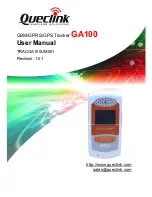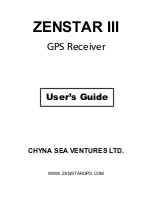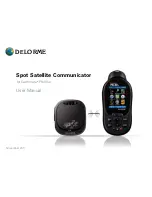
Garmin G2000 Pilot’s Guide for the Cessna T240
190-01263-01 Rev. A
402
Hazard avoidance
Sy
SteM
o
ver
vieW
fliGHt
inStruMentS
eiS
a
udio & cnS
fliGHt
Mana
GeMent
Hazard
av
oid
ance
afcS
additional fea
tureS
aPPendiceS
indeX
settings to determine MSL altitude. It is a widely-used MSL altitude source. Therefore, GSL altitude provides a
highly accurate and reliable MSL altitude source to calculate terrain and obstacle alerts.
Terrain SVT terrain and obstacle databases are referenced to MSL. Using the GPS position and GSL altitude,
Terrain SVT displays a 2-D picture of the surrounding terrain and obstacles relative to the position and altitude
of the aircraft. Furthermore, the system uses GPS position and GSL altitude to calculate and project the aircraft’s
fl ight path in relation to the surrounding terrain and obstacles. In this manner, Terrain SVT can provide advanced
alerts for predicted dangerous terrain and obstacle conditions.
Baro-corrected altitude (or indicated altitude) is derived by adjusting the altimeter setting for local atmospheric
conditions. The most accurate baro-corrected altitude can be achieved by frequently updating the altimeter
setting to the nearest reporting station along the fl ight path. However, because actual atmospheric conditions
seldom match the standard conditions defi ned by the International Standard Atmosphere (ISA) model (where
pressure, temperature, and lapse rates have fi xed values), it is common for the baro-corrected altitude (as read
from the altimeter) to differ from the GSL altitude.
diSPlayinG terrain Svt data
Terrain SVT uses yellow (caution) and red (warning) to depict terrain and obstacles (with heights greater than
200 feet above ground level, AGL) alerts relative to aircraft altitude. The system adjusts colors automatically as
the aircraft altitude changes. The colors and symbols in Figure 6-82 and Tables 6-12 and 6-13 represent terrain,
obstacles, and potential impact points.
Figure 6-82 Terrain Altitude/Color Correlation for Terrain SVT
Unlighted Obstacle Height Lighted Obstacle Height
Description
< 1000’ AGL > 1000’ AGL < 1000’ AGL > 1000’ AGL
Obstacle is red if 100’ below current
aircraft altitude or higher.
Obstacle is yellow if between 100’ below
and 1000’ below current aircraft altitude.
Table 6-12 Terrain SVT Obstacle Colors and Symbology
This manual downloaded from http://www.manualowl.com














































